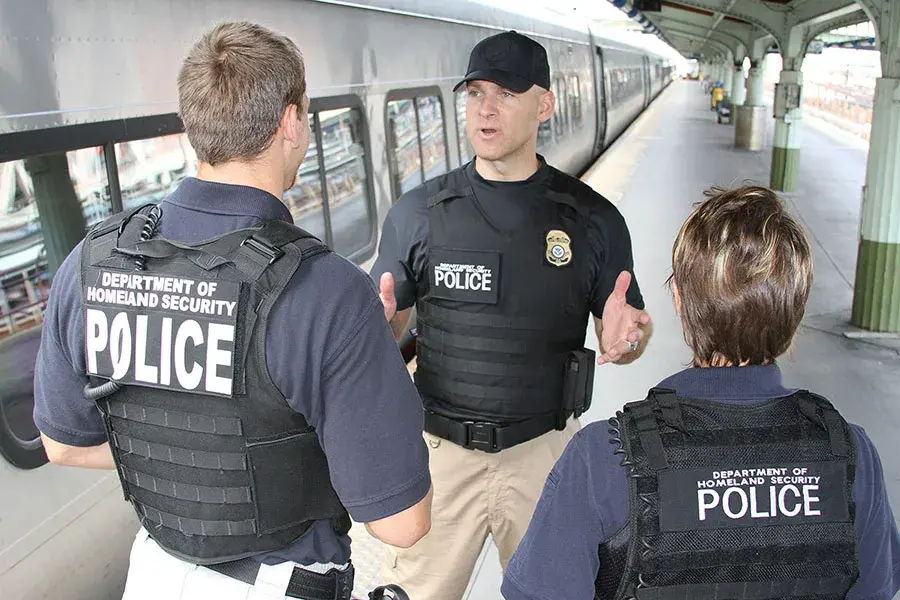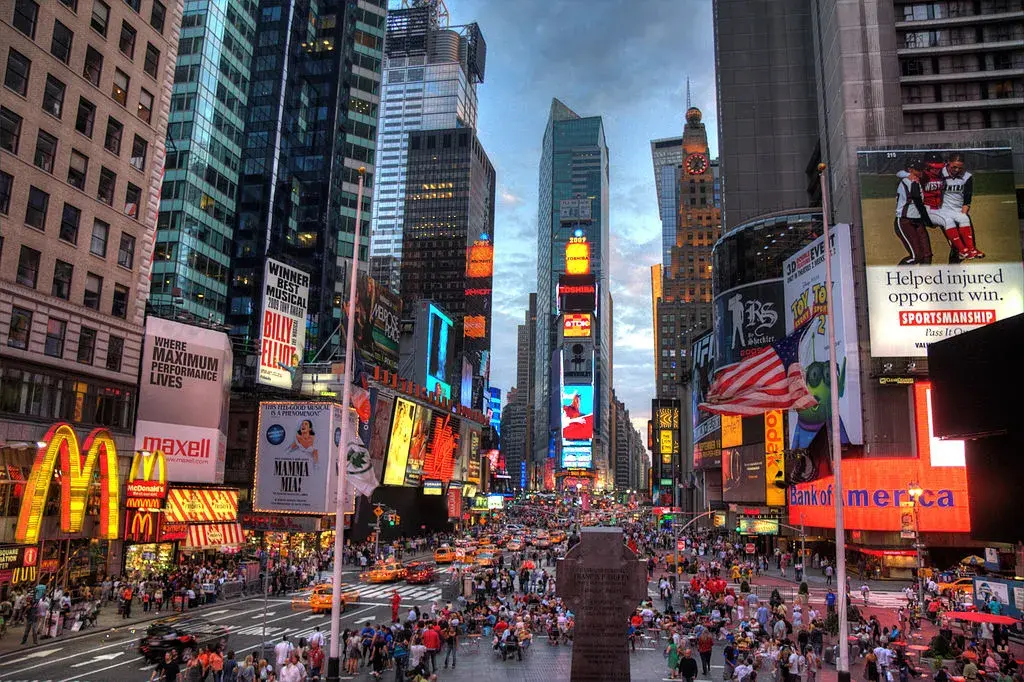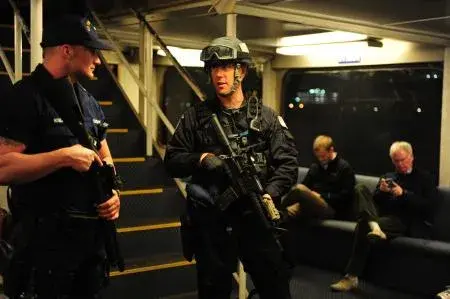The U.S. Department of Homeland Security was created as the result of the worst terrorist attack in our nation’s history. Explore how DHS fights to prevent such attacks, as well as how it responds to acts of terrorism and hunts down the perpetrators.
Marvel at America’s Avengers 
It was early Tuesday morning local time, March 22, 2016, in Brussels, Belgium--capital of the European Union. Many still groggy-eyed travelers at the Brussels Airport in Zaventem were checking in for flights or waiting in line for security screening when the airport was rocked by an explosion. Seconds later, another went off, blowing shrapnel and shards of glass far into the surrounding streets. The departures hall was utterly destroyed. Those lucky enough to survive the blasts, had to dodge a deadly avalanche of flaming ceiling panels raining down upon them.
Across town, the scene was no less macabre. A subway train had just arrived at the Maalbeek metro station filled with commuters who were likely heading into work at the nearby European Commission, Europe’s equivalent of the Executive Office of the President. As the doors of the middle car opened, a suicide bomber on the train blew himself up—taking with him the innocents aboard. In all, 35 people died in the attacks, hundreds more were injured. It was the latest in a string of attacks that have terrorized Europe, including those in Paris on November 13 that killed 108.
This disturbing trend of attacks on European rail systems begs the question: can it happen here in America? Not if TSA has anything to say about it.
Since 9/11, much of aviation security has focused on preventing terrorists from sneaking weapons or explosive devices into the secure areas of airports or onto an aircraft. This has meant improving databases to properly screen ticketed passengers. These enhanced vetting processes also apply to airport workers who have access to sensitive areas near aircraft. This is meant to protect against the so-called “insider threat,” as in the case of an airport worker who aided in the plot to bomb and bring down a Russian airliner last year. In other words, modern security protocols are designed for creating the securest possible perimeter radiating out from the aircraft itself into the areas in its immediate vicinity.
The Brussels airport attack, however, changed everything. Here’s how:
- The terrorists didn't purchase airline tickets, so their names did not go through advance database screening.
- They attacked public areas in the terminal, so-called “soft-security” areas, meaning those outside the reach of security checkpoint stations—i.e. ticketing areas, baggage claim, etc.—areas with limited security.
The lesson from Brussels: Modern security measures have effectively blocked terrorists from infiltrating secure areas. In desperation, terrorists have responded by attacking the public areas just outside of them. The threat has mutated and evolved.
Adapting to this new reality, TSA has increased the presence of its VIPR teams. VIPR—or, Visible Intermodal Prevention and Response teams—are deployed in airports and metro systems throughout the United States, and work in close coordination with local security and law enforcement officials.
Their purpose is to augment security. What makes them unique is that they do so while providing a visible law enforcement presence to deter would-be attackers.
VIPR is essentially a team of teams. Like The Avengers, each unit of a VIPR team has specialized powers to counter a specific threat type. VIPR teams consist of:
- Federal Air Marshals: Specially trained law enforcement officers sworn to prevent and disrupt acts of terrorism in progress within the transportation system. They are assigned to U.S.-flagged flights around the world and embedded in VIPR teams at a variety of locations.
- Behavior Detection Officers: Eagle-eyed watchers monitoring the hordes of humanity occupying a public space, looking out for signs of suspicious behavior that could indicate imminent danger or nefarious activity, and responding accordingly.
- Transportation Security Specialists-Explosives: armed with in-depth knowledge about improvised explosive devices, these specialists can see through seemingly-innocent items—Buzz Lightyear toys or Nintendo DS’s—and tell whether they are legitimate or a ticking time bomb waiting to go off.
- Transportation Security Inspectors: Responsible for ensuring security checkpoints remain impervious to prohibited and dangerous items clandestinely crossing through.
- Canine Teams: Equipped with super powered-noses, dogs are among the most effective ways to seek out hidden explosives and other dangerous substances.
Terrorist attacks on foreign passenger rail systems as well as spontaneous rampage style attacks like those seen in Paris, Tunisia, and San Bernardino underscore that terrorist threats, when blocked, will mutate and evolve. As they do, so will we.
DHS Component Involved
Times Square: For Mascots, NOT Mass Destruction 
Saturday night in Times Square is one of the busiest places a person can be in New York City—or, perhaps, even the world. Thousands of tourists flood onto its streets to pose for pictures in front of its iconic jumbotron screens or with characters like Big Bird and Iron Man. Some will queue for hours just to get into the latest Broadway revival of EVITA. However, in May 2010 a show of a more sinister sort very nearly made a revival of its own in the heart of New York: terrorism.
On the evening of May 3, 2010, a crude car bomb was discovered in a smoking Nissan Pathfinder parked haphazardly along a curb in the middle of Times Square. The S.U.V. was filled to the brim with tanks of propane similar to those used in backyard barbecues, two jugs of gasoline, dozens of M-88 firecrackers, and a metal gun case holding 100 pounds of fertilizer.
The vehicle was parked partially on top of the curb close to several theaters and attractions, still running, and with its hazard lights switched on. If this wasn’t suspicious enough, the S.U.V. began smoking. Two nearby T-shirt vendors—both Vietnam veterans—saw the smoke coming out of vents near the back seat of the S.U.V. and instinctively called to a mounted police officer who smelled gunpowder when he approached the S.U.V. and called for assistance. It seemed that the bomb had started to detonate.
Police in the area rushed into action, evacuating Times Square and the surrounding area, starting with businesses along Seventh Avenue, including a Foot Locker store and a McDonald’s. A large part of Midtown—from 43rd Street to 48th Street, and from Sixth to Eighth Avenues—had to be closed down. With the amount of firepower the S.U.V. was packing, the resulting fireball unleashed could have killed or wounded many people.
Thankfully, there was no explosion and no one was injured. Unfortunately, there was also no sign of the would-be bomber. The manhunt was on.
FBI and local law enforcement began scouring the car for any clues that might lead to the identity of the bomber. The bomber went through various lengths to try and conceal his identity:
- He stole plates from another vehicle and affixed them to the S.U.V.
- He removed the vehicle’s identification number (VIN) from the dashboard (though he failed to remove the VIN from the vehicle’s engine).
- He purchased the vehicle using cash through a seller on Craigslist.
Despite these intended obstacles, law enforcement was able to close in on the suspect and his identity became known early Monday, May 5: Faisal Shahzad, 30, a recently naturalized U.S. citizen from Pakistan living in Connecticut.
The investigation and ultimate capture of Shahzad was supported by U.S. Customs and Border Protection’s (CBP) National Targeting Center. The National Targeting Center (NTC) works quickly and quietly to identify people and products that pose potential threats to our Nation’s security at 327 U.S. ports of entry and over 30 Border Patrol checkpoints throughout the U.S. By combining information shared among intelligence and law enforcement partners with the NTC’s cutting-edge technological tools, it is able to stop criminals and potential terrorists from entering or exiting the country every day.
In this instance, the National Targeting Center-Passengers responded to the terrorism-related alert and executed time sensitive research to locate the suspect’s planned path to escape. It uncovered Shahzad’s plan to flee the country on Emirates Flight 202 to Dubai out of John F. Kennedy International Airport. The NTC-P immediately alerted CBP officers at JFK who took Shahzad into custody just as the flight was about to push back from the gate. It was the last flight out to Dubai—just after 11:00 p.m. Monday night. Thanks to the quick action of CBP and the analysis by the NTC-P, Shahzad instead caught the redeye to prison.
The work of the over 20 CBP personnel involved in identifying the whereabouts of and ultimately capturing Faisal Shahzad made possible his life prison sentence without the possibility of parole for the attack.
DHS Component Involved
Protecting North Eastern ports after terrorists attack 
April 15, or as Bostonians like to refer to it: Patriots Day. It is also the day on which the annual Boston Marathon, the oldest such event in the world, takes place. At 2013’s marathon, just after 2:49 pm, a pressure cooker bomb—filled with explosives, nails, and other improvised shrapnel—went off near the finishing line. Seconds later, another. The two bombs cut down numerous bystanders and lacerated runners still finishing the race.
The bombs had been detonated by timers, meaning the terrorists who set them off could be anywhere by now—and anybody. While first responders and investigators flooded the scene to treat those affected and identify the perpetrators (later identified as Tamerlan and Dzhokar Tsarnaev), measures immediately went into effect to block all potential means of escape for the terrorists. This effort was lead by the U.S. Department of Homeland Security; and included monitoring highways leading out of state and out of the country into Canada, re-vetting all flights taking off from Boston Logan International Airport, and other tactics both seen and unseen. Since Boston is a coastal city, this also meant cutting off any potential means of escape by sea.
The U.S. Coast Guard (USCG) is responsible for ensuring the security of the Nation’s waterways, including its ports. Here is how USCG responded to the 2013 Boston Marathon attack:
Investigating Another Possible Bombing Site
- After reports of an explosion at the JFK Presidential Library along the Boston Coastline (initially thought to be a third bomb connected to those detonated earlier at the Marathon site), USCG raised its Maritime Security (MARSEC) level to MARSEC 2, increasing its vessel presence, as well as all vessel and facility security measures across the port.
- Soon after, it was determined that the fire at the JFK Presidential Library was unrelated. MARSEC 2 was then modified to focus on passenger ferries to safeguard the largest concentrations of the public within the maritime transportation system, and to detect and identify the possible suspects—then still at large.
Blocking the Terrorists’ Means of Escape
- DHS established an extended perimeter to intercept potential suspects and interview witnesses; this extended perimeter included Boston’s waterways.
- USCG immediately raised its on-water security presence with increased 24/7 patrols in the inner harbor and along ferry routes.
- Commercial, tanker, passenger, and merchant vessels were all subject to increased security measures enforced by the Coast Guard.
Maintaining the Safety and Integrity of On-Water Traffic
- The Coast Guard Cutter Grand Isle patrolled waters around Boston Logan International Airport.
- Maritime Enforcement Specialists from the Maritime Safety and Security Teams patrolled along Boston’s wharves and waterside facilities with explosive-sniffing K-9 units, screening passengers and their bags as they boarded ferries.
- USCG worked with ferries and other commercial maritime operators to report suspicious activity.
- In addition to Boston, all of these maritime security measures were duplicated in New York Harbor beginning the next day, April 16, 2013.
By performing on-water counterterrorism operations and rendering a water route escape by the Tsarnaev brothers all but impossible, the U.S. Coast Guard assumed one of the lead roles in response to this attack. All this, while ensuring that the Ports of Boston, New York and New Jersey remained open to commercial and passenger traffic, even during the manhunt for the Tsarnaev brothers—the largest ever in U.S. history.
